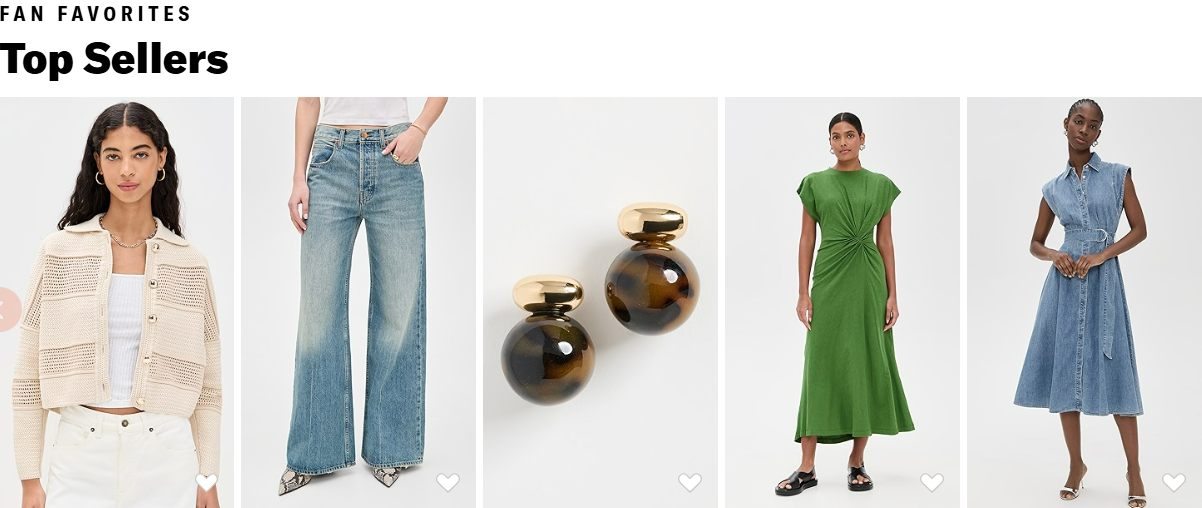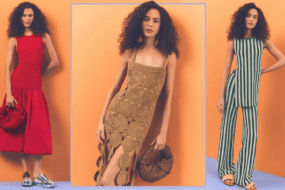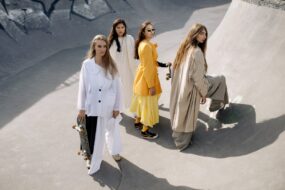
Fashion is more than just clothing; it is an ever-changing reflection of society, culture, and historical events. Over the past century, fashion has evolved dramatically, influenced by technological advancements, social movements, and artistic trends. This journey through the decades will explore how fashion has transformed, highlighting the key styles and influences that shaped each era.
1920s: The Roaring Twenties
The 1920s was a revolutionary decade in fashion, characterized by the rise of flapper culture. Women broke free from restrictive corsets and embraced shorter hemlines, loose silhouettes, and dazzling embellishments. Dresses with dropped waists and fringe detailing became popular, while accessories like cloche hats and long pearl necklaces complemented the look. Men’s fashion saw a shift towards relaxed tailoring, with pinstripe suits, Oxford bags, and fedoras becoming wardrobe staples.
1930s: Elegance and Hollywood Glamour
The Great Depression influenced fashion in the 1930s, leading to more practical and modest styles. Women’s clothing became more form-fitting, with bias-cut dresses that accentuated curves. Evening gowns featured floor-length silhouettes, inspired by Hollywood stars like Jean Harlow and Marlene Dietrich. Men’s fashion remained classic, with well-tailored suits and double-breasted jackets, often paired with wide-brimmed hats.
1940s: Wartime Utility and Femininity
World War II had a significant impact on fashion, as fabric rationing led to the rise of utility clothing. Women adopted more functional styles, including knee-length skirts, padded shoulders, and military-inspired coats. The iconic “Rosie the Riveter” look—featuring high-waisted trousers and work shirts—became symbolic of women entering the workforce. After the war, Christian Dior’s “New Look” introduced voluminous skirts and cinched waists, reviving femininity in fashion.
1950s: The Golden Age of Fashion
The post-war economic boom led to a resurgence of glamour and sophistication. Women embraced hourglass silhouettes, with full skirts, fitted bodices, and petticoats creating a dramatic effect. Icons like Audrey Hepburn and Marilyn Monroe influenced styles, popularizing pencil skirts and elegant evening gowns. Men’s fashion was refined, with gray flannel suits, narrow ties, and polished shoes defining the decade’s look.
1960s: The Youth Revolution and Mod Style
The 1960s saw a dramatic shift in fashion, driven by the rise of youth culture and countercultural movements. The mod style, popularized in London, featured mini skirts, shift dresses, and bold geometric patterns. Designers like Mary Quant and André Courrèges revolutionized women’s wear with modern, futuristic elements. Meanwhile, the hippie movement embraced bohemian styles, with tie-dye prints, bell-bottoms, and fringe detailing dominating the latter part of the decade.
1970s: Disco Fever and Bohemian Chic
The 1970s was an eclectic decade in fashion, blending disco glam with laid-back bohemian aesthetics. The disco scene introduced dazzling sequin dresses, platform shoes, and jumpsuits, inspired by Studio 54 culture. Meanwhile, the bohemian trend featured flowy maxi dresses, peasant blouses, and earthy tones, reflecting the free-spirited nature of the time. Men’s fashion ranged from wide-lapel suits to colorful, unbuttoned shirts paired with flared trousers.
1980s: Power Dressing and Bold Statements
The 1980s was all about excess, with fashion embracing bold colors, oversized silhouettes, and statement accessories. Women’s fashion saw the rise of power dressing, with shoulder pads, peplum blazers, and pencil skirts creating a strong, confident look. Pop culture influences from Madonna and Michael Jackson brought elements like lace gloves, leather jackets, and neon hues into mainstream fashion. Men’s fashion was equally daring, featuring bomber jackets, acid-wash jeans, and high-top sneakers.
1990s: Minimalism and Grunge
The 1990s marked a departure from the flamboyance of the ’80s, embracing a more relaxed and minimalist approach. Grunge fashion, inspired by bands like Nirvana and Pearl Jam, introduced ripped jeans, flannel shirts, and combat boots. On the other hand, minimalism, influenced by designers like Calvin Klein and Helmut Lang, emphasized clean lines, neutral tones, and simple silhouettes. Streetwear also gained popularity, with oversized hoodies, baggy jeans, and sneakers defining casual fashion.
2000s: Y2K Aesthetics and Celebrity Influence
The early 2000s brought a mix of futuristic and nostalgic trends, influenced by the rise of digital culture and reality TV celebrities. Y2K fashion featured metallic fabrics, low-rise jeans, and bedazzled accessories, reflecting the era’s obsession with technology and pop stars like Britney Spears and Paris Hilton. Meanwhile, athleisure became a defining trend, with tracksuits, crop tops, and sneakers becoming everyday essentials.
2010s: Social Media and Sustainable Fashion
The 2010s saw the rise of fast fashion, driven by online shopping and social media influencers. Platforms like Instagram and Pinterest played a major role in shaping trends, with brands like Fashion Nova and Zara responding quickly to viral styles. The decade also saw a growing emphasis on sustainability, with designers advocating for ethical fashion, upcycling, and eco-friendly fabrics. Popular styles included normcore (basic and casual outfits), streetwear (oversized hoodies, sneakers), and a revival of 1990s fashion.
2020s: A Blend of Past and Future
The current decade continues to blend past fashion eras with modern innovation. Nostalgic trends from the 1990s and 2000s are making a comeback, with baggy jeans, corset tops, and chunky sneakers dominating street style. At the same time, digital fashion and virtual influencers are reshaping the industry, with augmented reality and NFTs influencing how we interact with clothing. Sustainability remains a key focus, with more brands embracing circular fashion and ethical production practices.
Conclusion
Fashion has undergone remarkable transformations over the past century, reflecting changes in society, technology, and cultural movements. From the flapper dresses of the 1920s to the digital fashion of the 2020s, each era has left a distinct mark on the industry. As fashion continues to evolve, it remains a powerful form of self-expression and an ever-adapting reflection of the world we live in.






















